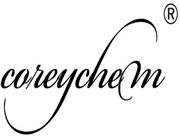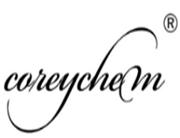| Chemical Properties |
White solid |
| Uses |
Maleic Anhydride is heterocyclic compound used in the manufacture of unsaturated polyester resins. Maleic Anhydride has a wide range of other applications; it is used in synthetic tensides, insecticides, herbicides and fungicides. |
| Definition |
ChEBI: A cyclic dicarboxylic anhydride that is the cyclic anhydride of maleic acid. |
| Uses |
In Diels-Alder syntheses (as a dienophile), manufacture of alkyd-type of resins, dye intermediates, pharmaceuticals, agricultural chemicals (maleic hydrazide, malathion), in copolymerization reactions. |
| General Description |
Colorless crystalline needles, flakes, pellets, rods, briquettes, lumps or a fused mass. Melts at 113°F. Shipped both as a solid and in the molten state. Vapors, fumes and dusts strong irritate the eyes, skin and mucous membranes. Flash point 218°F. Autoignition temperature 890°F. Used to make paints and plastics and other chemicals. |
| Air & Water Reactions |
Soluble in water. Reacts slowly with water to form maleic acid and heat. |
| Reactivity Profile |
Maleic anhydride react vigorously on contact with oxidizing materials. Reacts exothermically with water or steam. Undergoes violent exothermic decomposition reactions, producing carbon dioxide, in the presence of strong bases (sodium hydroxide, potassium hydroxide, calcium hydroxide), alkali metals (lithium, sodium, potassium), aliphatic amines (dimethylamine, trimethylamine), aromatic amines (pyridine, quinoline) at temperatures above 150° C [Vogler, C. A. et al., J. Chem. Eng. Data, 1963, 8, p. 620]. A 0.1% solution of pyridine (or other tertiary amine) in Maleic anhydride at 185°C gives an exothermic decomposition with rapid evolution of gas [Chem Eng. News 42(8); 41 1964]. Maleic anhydride is known as an excellent dienophile in the Diels-Alder reaction to produce phthalate ester derivatives. These reactions can be extremely violent, as in the case of 1-methylsilacyclopentadiene [J. Organomet., Chem., 1979, 179, c19]. Maleic anhydride undergoes a potentially explosive exothermic Diels-Alder reaction with 1-methylsilacyclopenta-2,4-diene at 150C [Barton, T. J., J. Organomet. Chem., 1979, 179, C19], and is considered an excellent dieneophile for Diels-alder reactions [Felthouse, Timothy R. et al. "Maleic anhydride , Maleic Acid, and Fumaric Acid." Kirk-Othmer Encyclopedia of Chemical Technology. John Wiley & Sons, Inc. 2005]. |
| Hazard |
Irritant to tissue. Dermal and respiratory sensitization. Questionable carcinogen. |
| Health Hazard |
Inhalation causes coughing, sneezing, throat irritation. Skin contact causes irritation and redness. Vapors cause severe eye irritation; photophobia and double vision may occur. |
| Fire Hazard |
Behavior in Fire: When heated above 300°F in the presence of various materials may generate heat and carbon dioxide. Will explode if confined. |
| Safety Profile |
Poison by ingestion and intraperitoneal routes. Moderately toxic by skin contact. A corrosive irritant to eyes, skin, and mucous membranes. Can cause pulmonary edema. Questionable carcinogen with experimental tumorigenic data. Mutation data reported. A pesticide. Combustible when exposed to heat or flame; can react vigorously on contact with oxidizing materials. Explosive in the form of vapor when exposed to heat or flame. Reacts with water or steam to produce heat. Violent reaction with bases (e.g., sodmm hydroxide, potassium hydroxide, calcium hydroxide), dkah metals (e.g., sodium, potassium), amines (e.g., dimethylamine, triethylamine), lithium, pyridine. To fight fire, use alcohol foam. Incompatible with cations. When heated to decomposition (above 150℃) it emits acrid smoke and irritating fumes. See also ANHYDRIDES. |
| Purification Methods |
Crystallise it from *benzene, CHCl3, CH2Cl2 or CCl4. Sublime it under reduced pressure. [Skell et al. J Am Chem Soc 108 6300 1986, Beilstein 17 III/IV 5897, 17/11 V 55.] |

 China
China






